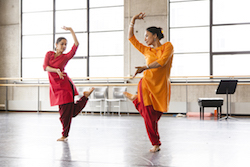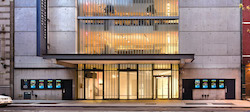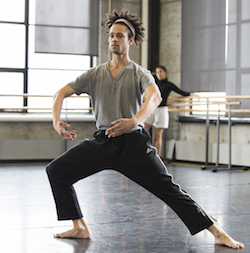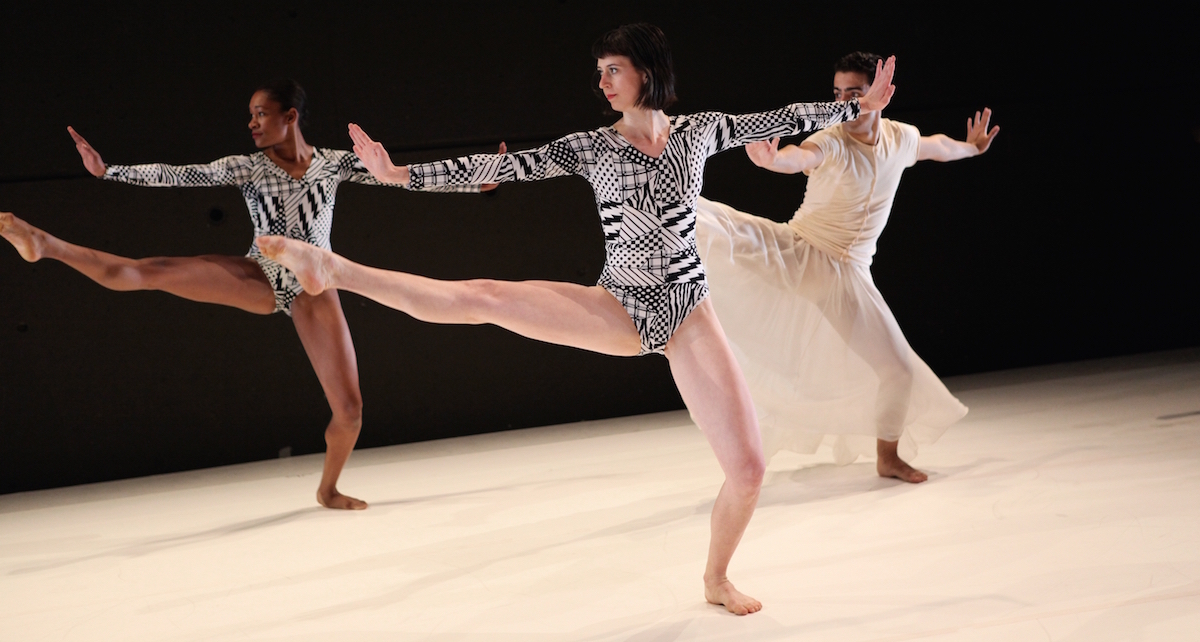The next in Dance Informa’s “5 Things I Want to Tell Dancers” series. Here, a director of marketing and communications offers advice for dance industry folk who want to spread the word about their work. Check back in the months ahead for guidance from other experts!
Kristen Miles is director of marketing and communications for the Baryshnikov Arts Center (BAC) in New York City. As such, she oversees the organization’s marketing, branding and public relations efforts and is involved in planning and development. “I’ve had the great honor of being part of BAC’s core team since shortly after the organization’s founding,” Miles says.
Here’s her advice for dancers and dance companies seeking to get out the message about their own work.

BAC Communications Director Kristen Miles. Photo by Eleanor Wallace.
#1. Be prepared.
To reach the audiences you want, says Miles, you need to keep up with what’s happening in your field — the people, places, issues and trends. She finds this exciting and all-important conversation in online sources such as @youvecottmail, the curated news feed of Alvin Ailey Senior Marketing Director Thomas Cott; Movement Research’s Critical Correspondence; the work of independent dance bloggers such as Susan Young and Eva Yaa Asantewaa; performance-art-focused culturebot.com; and the arts and culture website artsjournal.com.
“To stay plugged in, I also read reviews and arts and culture articles in The New York Times, the New Yorker and other publications,” says Miles. “If you’re outside New York City, be sure to include your area’s local and regional coverage.”
#2. Play well with others.
Organizations, like artists, can collaborate to achieve their goals, according to Miles. “The collegial energy among artists and nonprofit arts organizations these days is exciting, and essential, really, for long-term sustainability of the arts,” she says. “BAC is committed to this idea. When artistic director Mikhail Baryshnikov founded the organization, he envisioned it as a place where artists from all disciplines, and from all over the world, could work together creatively.”

BAC Space Spring 2016 Residency Surupa Sen in BAC’s Rudolf Nureyev Studio. Photo by Janelle Jones.
As a result of this focus, BAC co-presents and cross-promotes in order to provide the deepest support for its artists and the best experiences for its audiences, says Miles. Partnerships with Lincoln Center, Danspace Project, Performance Space 122 and other organizations have made possible performances and/or joint residencies. In addition, BAC receives support from the New York State Council on the Arts and The Andrew W. Mellon Foundation for subsidized rehearsal space and teams up with other presenters to show each other’s printed marketing material in lobby racks. After an artist has created work through a BAC residency, the organization stays involved. “We help spread the word about performances of the work in other spaces,” explains Miles.
You can look for groups with which you can pool resources in these ways and others — sharing direct-mail lists and including each other in social-media and newsletter mentions, for example — according to Miles. Your local and state arts councils are good sources for connections to potential collaborators.
#3. Ready, set, post.
“An online presence is vital, but it’s not one-size-fits-all,” says Miles. After posting material on Facebook, Twitter, Instagram and other platforms that appeal to you, check the built-in evaluation tools to see how much traffic each item is generating. Include smart links created through Bitly and other services that shorten urls and let you track their popularity, so you can get even more information about what’s attracting attention.

Baryshnikov Arts Center Exterior. Photo by Francis Dzikowski-Esto, Courtesy of H3 Architecture.
When you assess all this data, you’ll see what’s worthwhile and what needs adjusting, or dropping. Miles suggests checking out what others are doing online, and considering which of the strategies you might adopt.
Your website is a central to your online personality, but building a site from scratch is complex and resource-intensive, according to Miles. She advises looking into a template-driven option such as Squarespace, which will allow you to set up a site quickly and cheaply.
“Later, when you’re ready, you can go for a bigger customized site with more features,” says Miles. “When we redesigned the Baryshnikov Arts Center website a few years ago, it was a huge undertaking. However, it allowed us to add features we wanted, such as the BAC Stories blog, which offers behind-the-scenes accounts of our resident artists’ ongoing process.”
#4. Show it, don’t tell it.
“Strong photography has always been essential to successful marketing, and today video consumption is greater than ever,” says Miles. “The trick is cutting through the noise with content that is inspirational, informative and as compelling as your work onstage. To get the powerful images you need, talk to your photographer and videographer about your aesthetic vision. Discuss ways they might go about depicting your artistic values.”

BAC Space Spring 2016 Residency Patricia Lent and Andrea Weber in BAC’s John Cage and Merce Cunningham Studio. Photo by Janelle Jones.
Miles says that BAC has worked toward imagery that reflects the fact that it was founded by a working artist. “We like to show our light, open, airy spaces, in which artists have the freedom to create. We value our artists’ privacy, so our documentary style is more fly-on-the-wall than intrusive.”
BAC uses video to highlight its residency program, which does not have a large public-performance component. “Our short features on works in progress, including one of John Jasperse and one of Wendy Whelan, are good examples of our overall style, which places the artist at the center and lets the work speak for itself,” says Miles.
#5. When and if to upsize.
You may be comfortable handling your own communications strategy, but there may come a time when you want someone to take it over. Writing press releases, posting to social media and other communications chores can start to interfere with your creative work. And, given today’s competitive and ever-changing media environment, you may also wonder if a professional would be more effective.
Miles discussed two different models for choreographers and dance companies and the ways this change might take place. “Some artists working on a project basis will outsource communications and other administrative tasks to independent arts managers. They might also take advantage of resources available through artist service organizations, such as fiscal sponsorship,” she said. “Other artists have a 501(c)3 not-for-profit or are working toward acquiring this legal status. This model has the potential to open more doors from a fundraising standpoint.”
Miles currently serves on the advisory council of Dance Heginbotham, a company that is working toward obtaining nonprofit status. According to Miles, choreographer John Heginbotham has found that the company’s managing director, Adrienne Bryant, has been able to relieve him of numerous administration-heavy burdens, including launching a website, running an online fundraising auction and liaising with the accountants and booking agency. This has meant more time for Heginbotham to do his creative work and growth for the company that’s been both rapid and sustainable.
Only you can decide when any of these steps are right for you, says Miles. “But, with strong content that’s part of a well-crafted communications strategy,” she says, “you’ll be able to deliver the right message to the right audience at the right time and get where you want to go.”
By Stephanie Woodard of Dance Informa.
Photo (top): Dance Heginbotham performing ‘TWIN’ in 2012 at BAC’s Jerome Robbins Theater. Photo by Julieta Cervantes.













